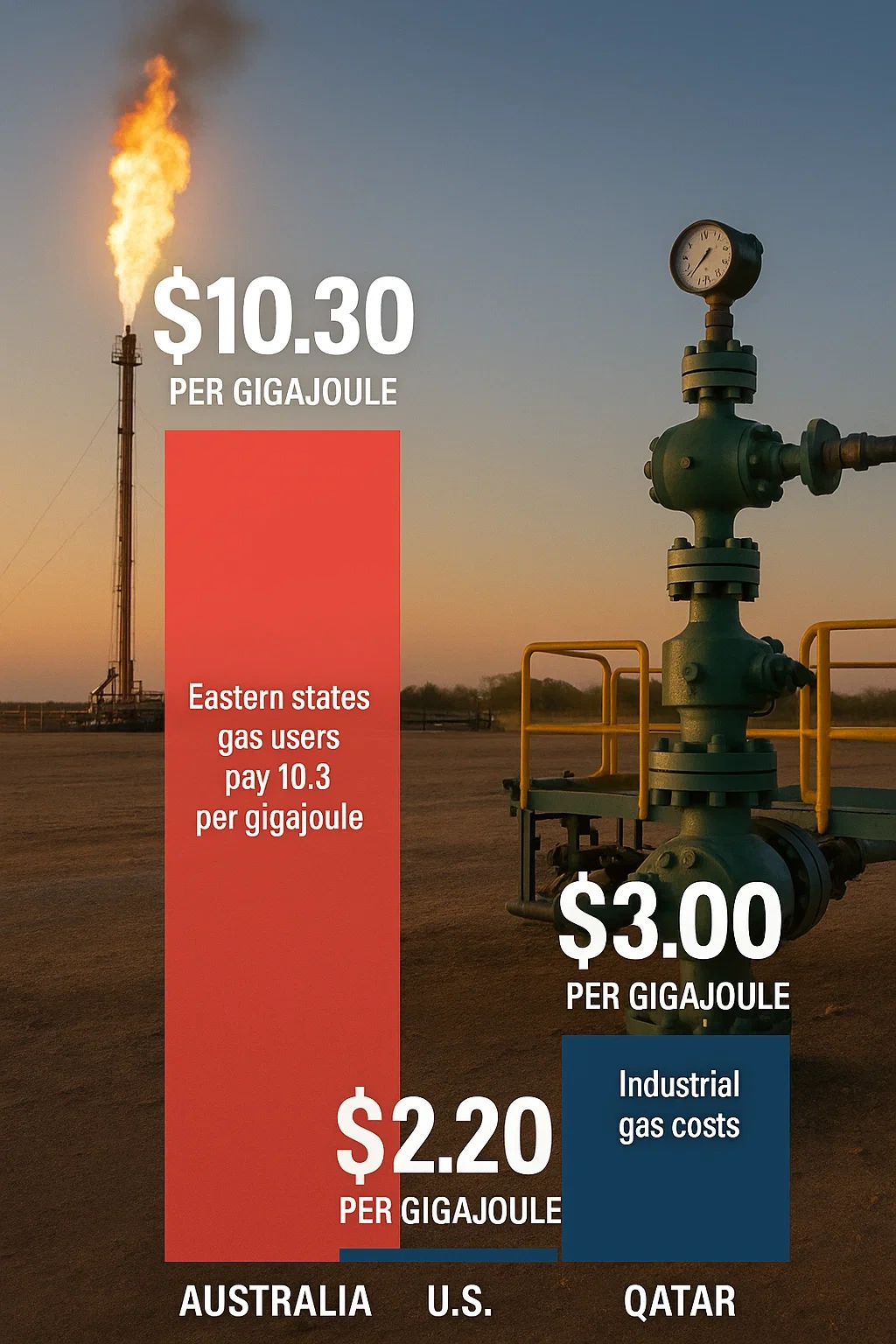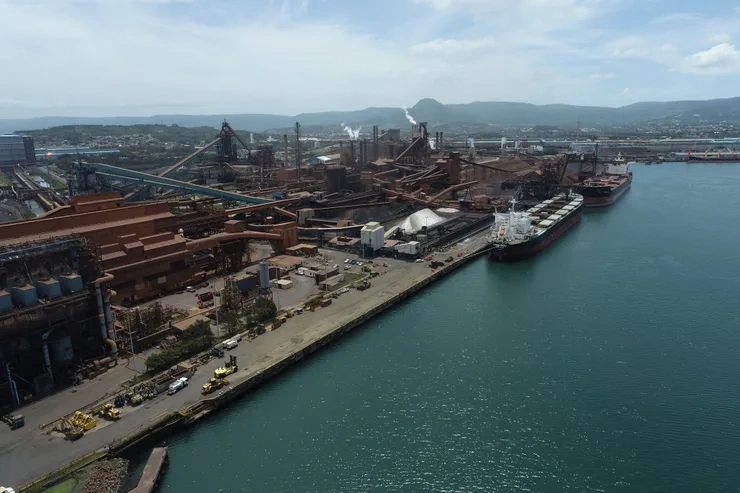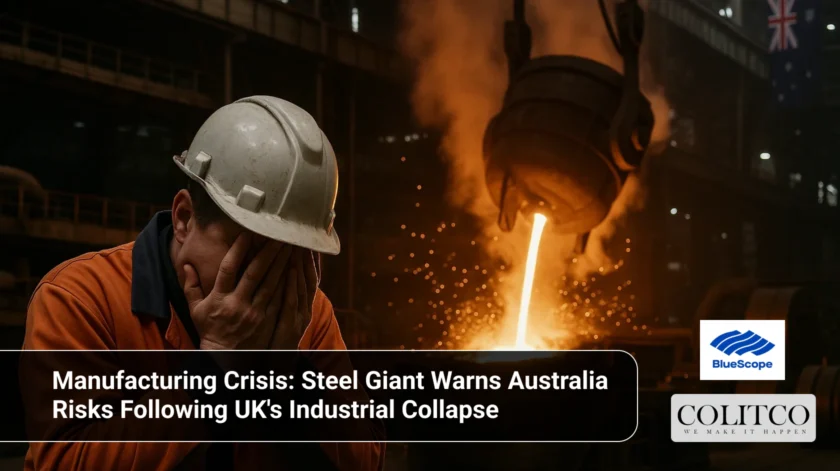BlueScope Steel’s chief executive has delivered a stark warning that Australia’s manufacturing sector faces extinction unless the federal government acts urgently to address soaring gas prices that are three times higher than global competitors.
Mark Vassella told the National Press Club on 8 October that the nation’s industrial base is at a “tipping point” and could follow the UK’s path of manufacturing decline if energy costs remain unchecked.
“No gas, no future made in Australia,” Vassella declared, adding that once manufacturers shut down, “there’s no coming back.”
UK Serves as “Cautionary Tale”
The BlueScope boss pointed to Britain’s industrial collapse as a blueprint of what Australia must avoid. High energy costs and poor policy decisions decimated the UK’s manufacturing base over recent decades.
Vassella and other industry leaders warned that Prime Minister Anthony Albanese’s “Future Made in Australia” policy is doomed without immediate gas market reform.
The manufacturing sector’s survival depends on competitively priced energy, particularly as companies attempt the costly transition to low-emissions production.
The Gas Price Crisis: Numbers Tell a Dire Story
BlueScope’s annual results revealed the scale of the problem facing the Australian industry.

Australian prices are three to four times higher than competitors
“Despite massive gas reserves, Australia has one of the highest wholesale gas prices among producer nations in the world,” Vassella told the National Press Club.
The bizarre situation has emerged where domestic gas demand has fallen 20 per cent over the past decade and volumes have increased massively, yet prices have more than doubled.
Australian industrial gas users are effectively subsidising cheaper energy for overseas competitors through the LNG export market.
Gas Reservation: The Western Australian Model
Manufacturing Australia, representing BlueScope and other industrial producers, is calling for an east coast gas reservation scheme similar to Western Australia’s successful model.
Western Australia has operated a reservation system since 2006, requiring gas producers to set aside supply for domestic users. During that period:
- WA gas production has tripled
- Massive investment has flowed into the state
- Domestic industrial users maintained competitive pricing
“I’m not sure I buy the argument that a reservation system means no one’s going to invest,” Vassella said, citing WA’s track record.
The proposed scheme would reserve a proportion of newly contracted gas for domestic use, with all uncontracted gas automatically reserved for local users.
One suggestion involves the government becoming a group buyer of gas and reselling it to domestic consumers, or placing a levy on LNG exports to fund price reductions.
Whyalla and Manufacturing Under Threat
BlueScope’s plans to revive the loss-making Whyalla steelworks in South Australia are directly threatened by high gas prices.
The company leads a heavyweight consortium including Nippon Steel, JSW Steel, and POSCO in bidding for the troubled plant, which received a joint $1.9 billion rescue package from federal and state governments.
Beyond steel, gas costs threaten a wide range of Australian manufacturers:
- Rheem hot water systems
- Alcoa aluminium smelting
- Cement production
- Fertiliser manufacturing
- Dulux paints
- Brick and gyprock production
- BlueScope’s COLORBOND roofing and cladding
“Today, our current manufacturing industry is under threat from a restricted supply of affordable gas,” Vassella warned. “This is a problem, but one that can be resolved with sound policy.”
Industry Calls for Immediate Action
The manufacturing sector is united in demanding policy intervention. Industry leaders insist they’re not calling for contracts to be torn up, but rather for new arrangements to prioritise domestic supply.
Manufacturing Australia’s proposals include:
- East coast gas reservation for newly contracted supply
- Use-it-or-lose-it provisions for gas fields
- Export levy to fund domestic price subsidies
- Government group purchasing for industrial users
“Australia should ignore the self-serving objections of overseas energy companies,” Vassella said, referring to multinational gas producers opposing reform.
The stark reality is that without competitive energy costs, Australia’s manufacturing base will continue to shrink, taking with it thousands of jobs in regional communities.
Decarbonisation Goals at Risk
The gas crisis threatens not just current manufacturing but also the transition to low-emissions production. BlueScope is investing $300-400 million in decarbonisation technologies, including the NeoSmelt project with Rio Tinto and BHP.
The company’s Port Kembla steelworks requires affordable natural gas as a transitional fuel before green hydrogen becomes commercially viable. Without it, Australia’s path to green steel production faces significant delays.

Port Kembla Steelworks
“Regardless of the technology pathway eventually adopted at Port Kembla, transition can only occur if we have firm affordable renewable energy,” Vassella stated.
Political Response Awaited
The manufacturing sector is now watching closely to see whether federal and state governments will act on the industry’s warnings.
The choice facing policymakers is stark: implement gas reservation and price caps to save manufacturing, or watch Australia’s industrial base follow the UK into terminal decline.
With the east coast gas market described as “broken” by industry leaders, the clock is ticking for decisive government intervention.
Also Read: Australian Mining’s Path to Net-Zero: Strategic Decarbonisation Transforming Industry by 2050
FAQs
Q: Why are Australian gas prices so high despite massive reserves?
A: Australia exports most of its gas as LNG without adequate domestic reservation policies, creating artificial scarcity in the domestic market despite ample overall supply.
Q: What is gas reservation?
A: Gas reservation requires producers to set aside a percentage of production for domestic users before exporting. Western Australia has successfully operated this system since 2006.
Q: How does this affect the average Australian?
A: Higher manufacturing costs flow through to construction materials, vehicles, appliances, and other consumer goods. Job losses in manufacturing also impact regional economies.
Q: What is the Future Made in Australia policy?
A: Prime Minister Albanese’s initiative aims to revitalise Australian manufacturing through government support and investment, but industry leaders say it cannot succeed without competitive energy prices.
Q: Could manufacturing really leave Australia permanently?
A: Yes. Vassella warned that once heavy industry shuts down, the specialised infrastructure and skilled workforce are lost permanently, making it virtually impossible to restart operations.












